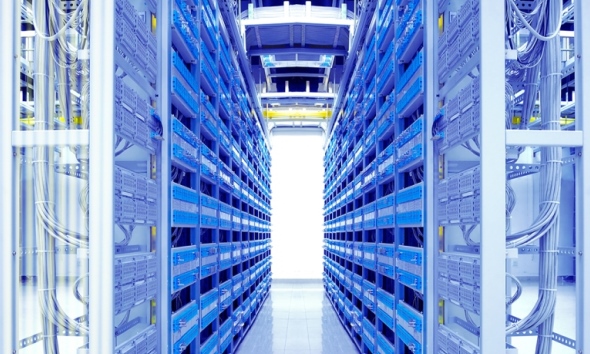部落格
主頁 » 部落格 » How is the Data Center Optimization Initiative (DCOI) Changing the Landscape? (Part 1)
How is the Data Center Optimization Initiative (DCOI) Changing the Landscape? (Part 1)
Posted on May 8, 2017 by Gento

Data centers are becoming more important with each passing day. One study estimates that data center construction worldwide will continue to grow at a rate of about 21% per year until 2018. Yet at the same time, the infrastructure that supports these mission-critical data centers is woefully inefficient on their best days. It is estimated that about 30% of servers in the United States alone were considered comatose - meaning that expensive computing assets are going to waste. Worldwide, experts estimate that about 10 million servers (representing about $30 million in capital) have not performed valuable computing work OR delivered data in the past six months.
Simply put, things are growing too large, too fast. The complexity of these environments are changing all the time, making it difficult for data center operators to keep up with issues that lead to downtime or lost productivity. Not to mention, how difficult it is to actually increase design and operational efficiency at the same time.
In many ways, these are the types of issues that the Federal Government Data Center Optimization Initiative (DCOI) was designed to address. As one of the biggest data center users on planet Earth today (the United States government, alone owns approximately 2,000 data centers), federal officials have a vested interest in strengthening the efficiency of the existing infrastructure to both better meet the needs of today and prepare for the perceived future needs of tomorrow and beyond.
But just how is the DCOI changing the landscape of the modern day data center? While a certain level of disruption is to be expected and even welcomed, this is an understandably complicated topic that requires you to keep a few key things in mind.
The Data Center Optimization Initiative: Breaking It Down
At its core, the DCOI is a federal mandate that requires agencies to "develop and report on data center strategies" in an effort to consolidate aging and inefficient infrastructure, make better use of existing facilities, unlock new opportunities in terms of cost savings and begin a lengthy but pivotal transition into a more efficient infrastructure - essentially all at the same time.
To that final point, as of March 2016 United States government agencies are no longer actually allowed to either build new data centers or expand existing ones until they can prove that there are no other viable (read: more efficient) alternatives available. Just a few examples of alternatives that would be considered acceptable include but are not limited to ones like:
- Transitioning into cloud computing and related services.
- Leasing colocation space.
- Using services shared with other agencies.
- Migrating to DCIM, or Data Center Infrastructure Management.
When you consider that the US government's total annual IT spend is estimated to be about $80 billion, placing a high priority on more affordable, better options makes a large amount of sense. The government actually spent close to $5.4 billion on physical data centers alone in 2014.
What Has Actually Changed?
The DCOI was primarily intended to replace the rules and goals laid out in the Federal Data Center Consolidation Initiative, which first debuted in 2010. A few of the major objectives of the FDCCI included:
- Reducing the overall footprint of government data centers, both in terms of energy consumption and real estate requirements.
- Reducing the total cost of hardware, software, and operations of each data center.
- Strengthening the IT security capabilities of the federal government.
- Shifting towards more efficient computing platforms and technologies wherever possible.
The DCOI, on the other hand, is much stricter in its primary goals of both reducing the government's data center inventory and the total cost required to maintain it. The DCOI places a heavy emphasis on the role of cloud computing moving forward and if everything goes to plan, the government wants to reduce any and all spending on physical data by as much as $1.36 billion over the next three years.
In Part 2, we will discuss what these changes mean for the consistently evolving data center landscape moving forward. To read Part 2 click here - http://www.raritan.com/blog/detail/how-is-the-data-center-optimization-initiative-dcoi-changing-the-landscape-
Other Blog Posts
- 從資料中心失效對企業帶來的骨牌效應──探討感測器的重要性
- Posted on November 5, 2023
- 更高規格的電源要求加速AI市場成長與Raritan PDU的採用
- Posted on October 11, 2023
- 資料中心服務中斷次數減少,但停機的代價仍舊可觀
- Posted on September 20, 2023
- 意見調查:資料中心面臨能源使用與人力短缺困境
- Posted on September 20, 2023
- Raritan安全切換器:相容於Secure NIAP 4.0的桌上型KVM
- Posted on September 20, 2023
訂閱
近期活動
- New Zealand Cloud & Datacenter Convention 2022
- 3 November 2022, 9am – 4pm • Grand Millennium Hotel, Auckland, New Zealand
- Data Centre World Singapore
- 12th – 13th Oct 2022
- Korea Cloud & Datacenter Convention 2022
- 6th Oct 2022
- Philippines Cloud & Datacenter Convention 2022
- 4th Aug 2022
- JANOG50 Meeting Hokkaido
- 3th – 15th July 2022
Raritan最新新聞
- Legrand 使用兩大創新智慧型機架 PDU 重新活化資料中心產業
- Posted on May 1, 2023
- Exclusive interview丨How does Huizhou upgrade its manufacturing industry?
- Posted on December 2, 2021
- Raritan 發表 MasterConsole® 數位雙電腦切換器
- Posted on February 18, 2021
- Legrand Data, Power and Control Division Announced as Finalist in Six Categories at DCS Awards 2020
- Posted on November 9, 2020
- Raritan 新款智慧機櫃控制器 (SRC) 可智慧管理資料中心與關鍵任務設施的環境與安全性資訊
- Posted on November 9, 2020